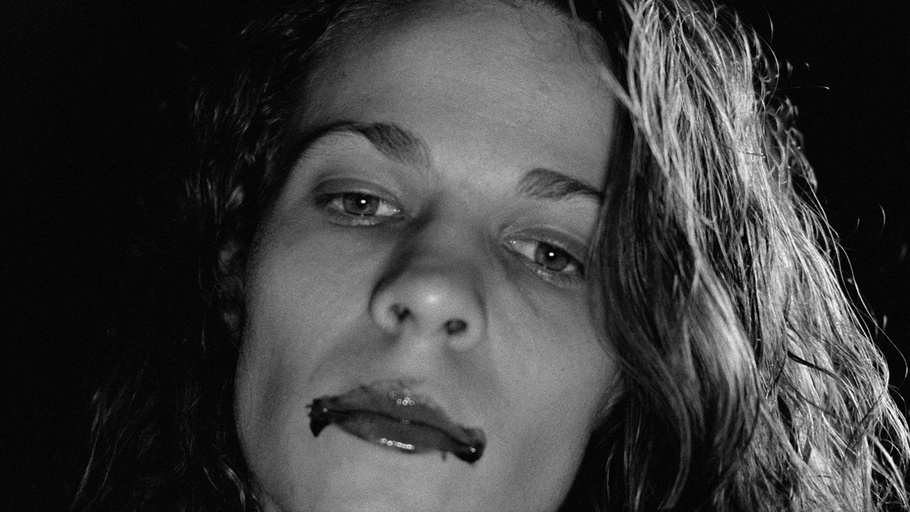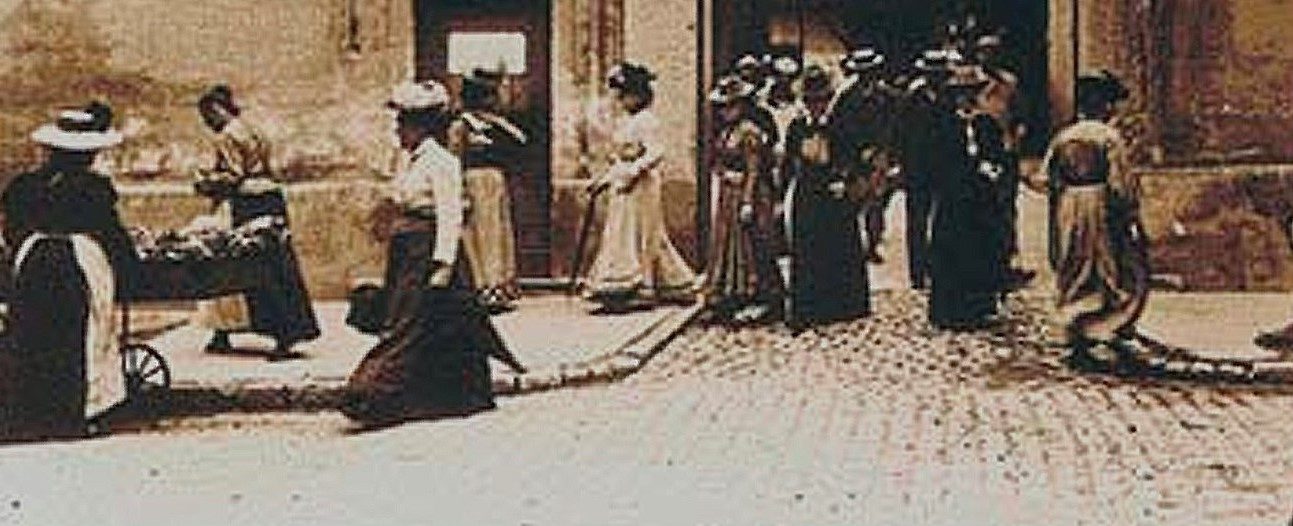United States, 1995
Directed by Abel Ferrara
With Lily Taylor (Kathleen Conklin), Christopher Walken (Peina), Annabella Sciorra (Casanova)

Kathy is a PhD. student in philosophy at a New York university. One evening, on her way home, she is grabbed by a strange woman, rushed to an alleyway and thrown against a wall. Her aggressor then jumps at her neck and drinks her blood.
Kathy has been the victim of a vampire – and she slowly becomes herself a vampire, keen on stalking preys and unable to pursue a normal life. Tormented by her new, special need, she tries to check her nature. However, a decisive encounter with a fellow vampire, Peina, suggests her fight is futile. She keeps morphing into a new being even as she uses the philosophical methods she studies to understand her metamorphosis – and even as she tries hard to pursue a normal life, including completing her academic year. She eventually graduates and hosts a party that is supposed to celebrate her success but turns in an orgy of blood-sucking for her and her fellow vampires. Wandering in a state of stupor after the massacre, she dies in a hospital, a padre at her side. But her resurrection inevitably follows, as her time is now endless.
As it features vampires, “The Addiction” could be tagged a horror movie. But the horror lies here beyond pools and rivers of blood or the vicious game between monsters and victims. It lies inside the body of Kathy as she writhes on her bed, stricken by an awful illness; in the first try to drain blood from a victim, when she hesitantly uses a syringe to draw the liquid and to inject it in her arm; in the desperate attempt to slash her wrist as she fails to lose her blood; and eventually in her growing assertiveness over her unnatural body. The director’s stroke of genius and the film’s boldness are to use the vampire stereotype as a metaphor for addiction – the dependence on a toxic substance that the film’s title clearly refers to.
Sights and sounds: the metamorphosis is not only painted in a grainy, expressionistic black-and-white and in a gorgeously dark atmosphere, it is also carefully articulated, as Kathy comments the changes in her behavior and above all in her worldview. Being a student in philosophy, ideas and words are not really lacking her. But more surprising and fascinating is the fact that intellectual discourses and references are rife in the lines of her fellow monsters, especially Peina, but also Casanova, the one who bit her at the beginning. The gist of these ruminations is deeply pessimistic and terrifyingly lucid (though they can sound of pompous to some in the audience). Addiction has a double effect, to make the addicts forget the reality but also to make them aware of this particular power of the addictive substance – you drink to forget and to enjoy alcohol as it makes you forget. More generally, evil acts are committed for we are ourselves evil. Evil is omnipresent and eternal – historical knowledge is illusion, dialectics superfluous, choice actually impossible.
To have no choice: the phrase is said carelessly by fellow students as they describe their work and their presence at the university, or rather, explain them away. But Kathy likes to remind people they did not even make the effort to choose. The ironic tragedy here is that she is doomed to watch the possibility of alternatives vanish from her life and the ending shows just that – Kathy as a good vampire bound to wander on Earth forever.
This earth has witnessed a fair share of horrors. The first images are television archives on the My Lai massacre, which shocks Kathy, still the ordinary (and supposedly innocent) young American. Rather a counterintuitive start for a horror film, but perhaps not for a lecture on ethics, these dreadful images of history are followed by other old footage, from the Second World War, part of an exhibition taking place at the university. Like the lecture Kathy attends after her fateful aggression, all these elements are watched by students perfunctorily, as they are just food for their scholar thoughts, stuff to work on in order to write down an essay and get good grades. The students do not engage with them in any emotional manner. This conventional intellectual behavior of people safe in their study rooms befits those who are unable and unwilling to face the harshness of reality (perhaps most of us). The addiction of Kathy and the new ideas on life it carries make her aware of this point and let her feel that this behavior is a cause for contempt and not a cause for celebration (as it turns into a massacre, Kathy’s party is her cruel and ironic answer to academic accolades and short-sighted professors).
At first, director Abel Ferrara was not interested in a vampire story. But stirred by the screenplay of Nicholas St John, he eventually made a B-movie into a highly ambitious film, intellectually perceptive and stimulating, and a poignant depiction of a destructive condition he happened to know too well.

